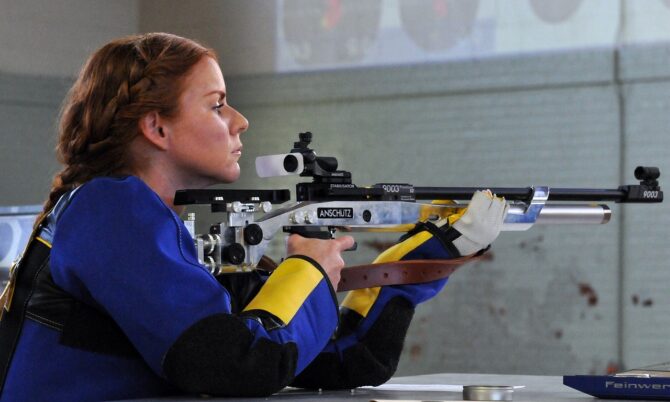There may not be any other kind of watch that needs as much discussion and interaction from the owner like the chronograph.
However, there can be certain pleasure which comes after interacting with the movement of finely-made mechanical chronograph like Breitling Navitimer. You can feel the release of button under the right finger pressure, sweeping of hand begins the march and hearing the sufficient click.
There can be a tension which builds as your hand approaches sixty seconds repeatedly and minute counter will tick over to next hash. Then push the button once again and time will come to a stop. Then press the reset button and immediately all your hands snap back too fast, again getting ready.
The chronograph that was first patented had a simple mechanism of clock in a box that was connected to 2 ink styluses which wrote on rotating paper discs to compare the two race horses times on any track.
The “chronograph” literally meant “time writer”, and its usefulness was appreciated long before the watchmakers scrambled in making their own, that was more accurate and portable. In the beginning, chronographs were in pocket watch cases and were more or less acting as stopwatches.
They never indicated the time of the day at all. It is much easier developing a stopwatch as compared to integrating this function with the movement which also keeps time of the day.
Initially, chronographs had only single button, that was coaxial to winding crown itself. Then pushing the button in sequence started, stopped and finally reset the chronograph. Gaston Breitling in 1915 invented a separate pusher chronograph, thereafter two-button chronograph came after few years later. The industry has not looked back ever since.
The early chronograph movements have been made up with simple mechanical levers. There are 2 most prevalent movement types that is still persisting even today are the coulisse lever and the column wheel.
For movement of column, wheel mechanism that appears like a very small castle turret rotates single increment with each chronograph pusher’s click. A mechanical finger will fall between the column wheel’s teeth to activate this function.
The movement of column wheel needs precision in build and design, and the final action is visible to the user during the quick and smooth response, which is usually visible with observation. Chronographs having column wheel are usually little expensive and also not as common.
However, they are typically desirable more to watch collectors due to the quality level and attention to various details in their manufacturing.
There are few advantages that coulisse lever movement offers, as it is very robust and easier to manufacture too. In such movement type, each push of chronograph button will move heart-shaped cam, back and forth for starting, stopping or resetting the chronograph.
Coulisse lever movement actions can be firmer, needing more effort for engaging and not so tactilely pleasurable for operating. However, majority of such mechanical chronographs that is sold today usually use certain coulisse lever movement which was first presented in 1974 and it is still alive even today.
During late 1960, several watch companies started developing world’s first automatic chronograph. Till then, despite the presence of automatic watches, still chronographs had to be wound by hand because of complexity and space limitations to create an automatic chronograph.
There were 3 groups competing very closely in 1969. The Calibre 11, which is automatic chronograph movement which used an oscillating weight that was small, called a micro-rotor. The “El Primero” used full-sized winding rotor.
Japanese company Seiko was far ahead of both above and developed their own automatic 6139 chronograph. Most of these mechanical chronographs were sold since that period time.
In all forms either hand wound or automatic, coulisse lever or column wheel — chronographs have become a tool of astronauts, pilots, race car drivers, doctors and soldiers.
They are also used by those who generally appreciate taking part in various dance of levers and gears every time any button is pressed. Now you can find chronograph for almost any kind of budget and taste.
Contents
Five great chronographs
Following are five very well-known chronographs.
Hamilton Khaki Pilot Pioneer Chronograph
For America’s railroads, this Pennsylvanian company Hamilton used to make pocket watches. Hamilton by the 1960s had Swiss factory that was building chronographs meant for the Britain’s Royal Air Force.
This Khaki Pioneer is in fact homage to all those watches, having the same case that is asymmetrical with two-register dial. This chronograph is really driven by H-31 calibre of Hamilton, whose tracking time is up to thirty minutes and boasting about sixty-hour power reserve.
TAG Heuer Formula 1 Chronograph
Without considering a TAG Heuer, you just can’t have any list of chronographs. Since 1860, this brand was a leader in both aviation and automotive chronographs, and the 60s and 70s Autavia was its icon.
The Formula 1’s latest generation recalls tonneau-shaped case and also bold bezel of Autavias, however it has better water resistance as well as a sapphire crystal.
Longines Column Wheel Chronograph
With column wheel chronographs movements will show high watchmaking prowess that often come with certain matching price tag. But you would find it difficult to get more affordable one as compared to Column Wheel Chronograph offered by Longines.
This watch is not only classically styled but also its movement yields very precise, crisp actuation which is really a pleasure for operating.
Bremont Boeing Model 247
The recent partnership of this British brand with an aircraft giant Boeing, really has taken the Bremont watches to new height with its teeth building with tough aviation-inspired chronographs.
The Model 247 can stand up to almost anything, while keeping time by keeping chronometer-certified accuracy.
Vacheron Constantin Harmony Monopusher
Vacheron has introduced just this year, new hand-wound chronograph calibre in certain watch which was inspired by the one that was built in 1928. You would really swear that the harmony does not just stop time with its 2-register crown and dial-mounted mono-pusher, but it really travels back into it.












